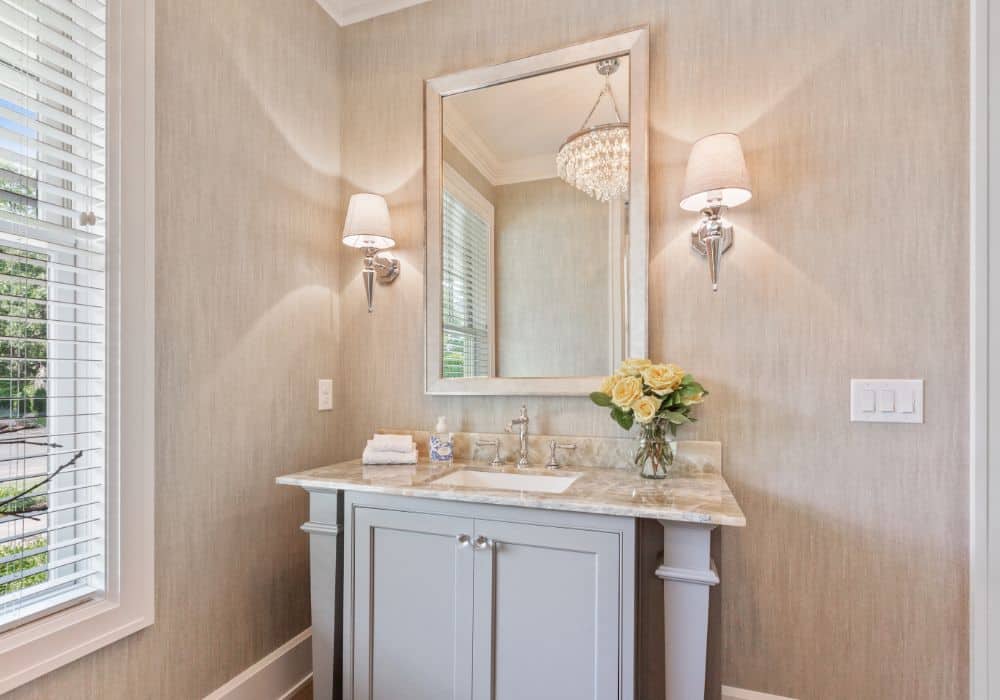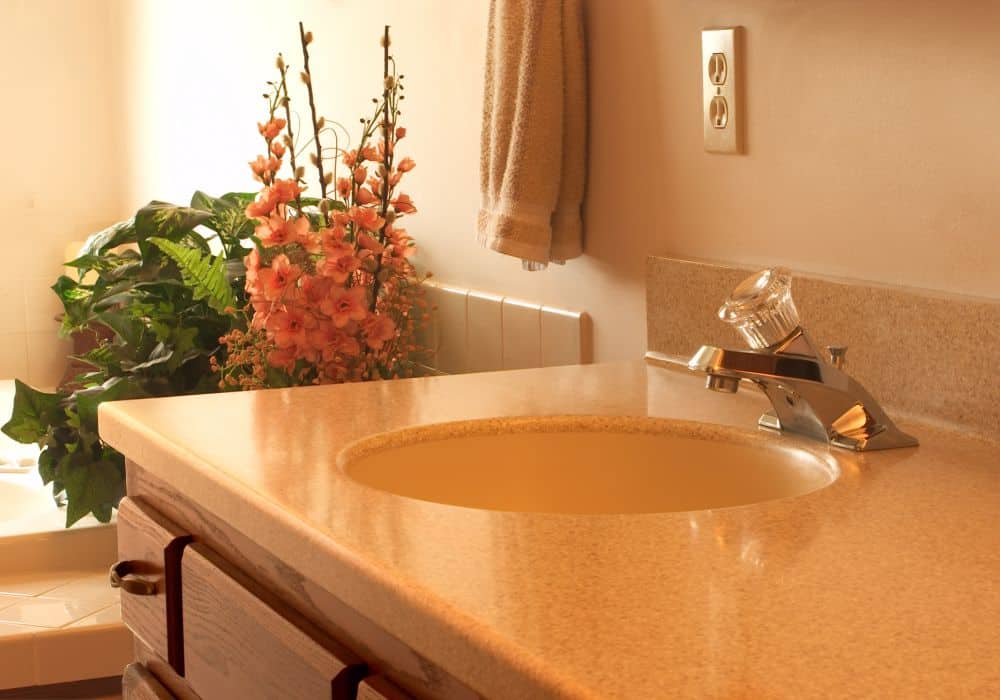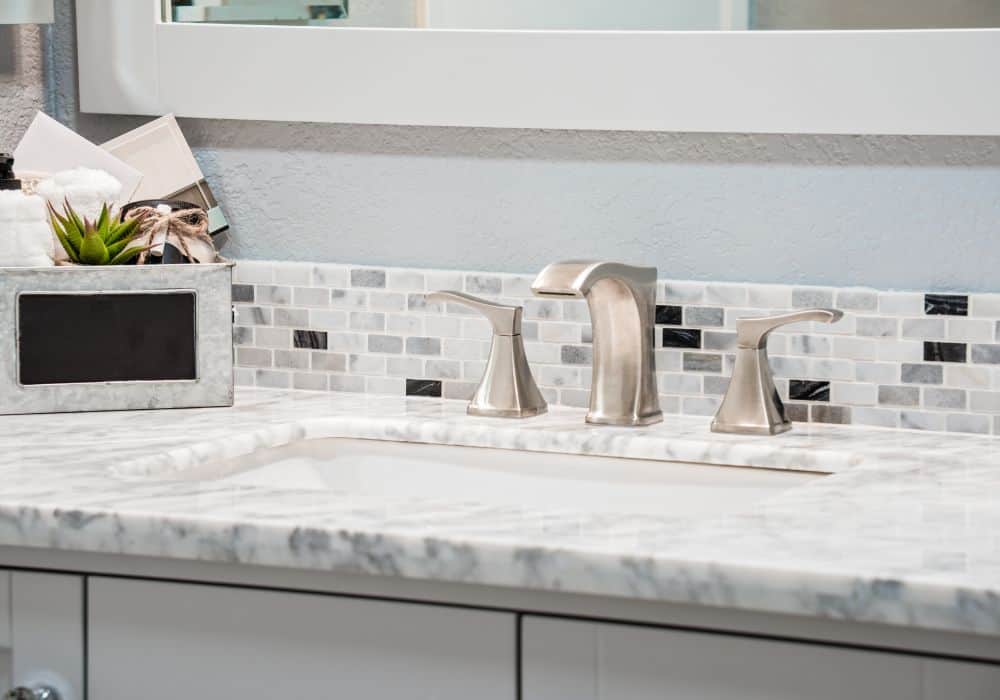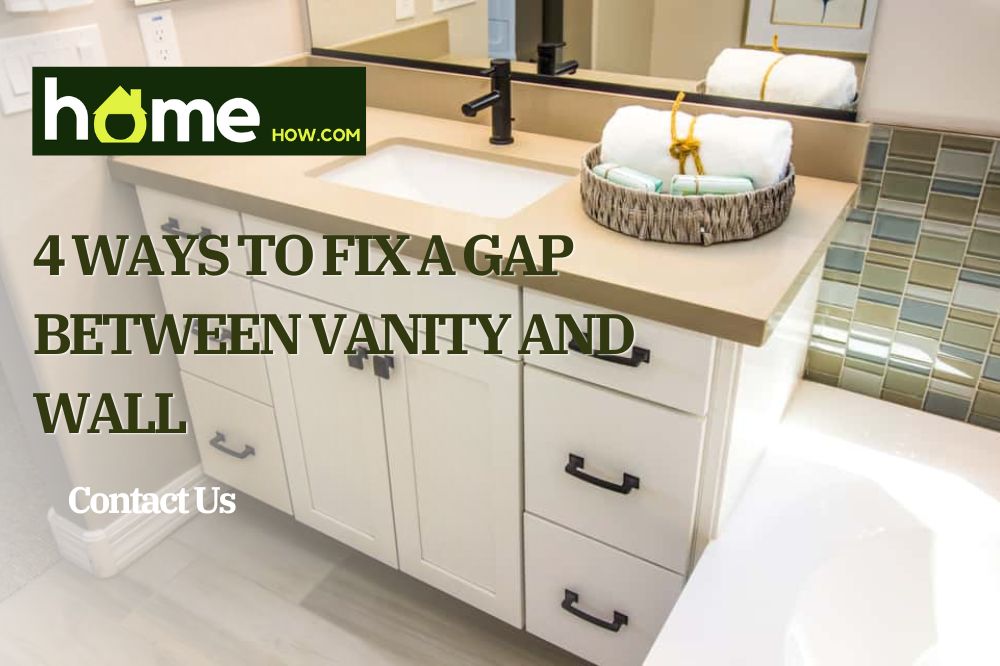Installing a new vanity or remodeling an old one changes the look of your bathroom or bedroom. However, that beauty can become marred if there are issues with the work, such as a gap between the vanity and the wall, even if it is a 2-inch gap.
You are not alone if you are wondering how to fix a gap between the vanity and the wall. Fortunately, all hope is not lost because there are a few things to do to solve the problem without destroying the beauty of the original work. You can attempt to fix them if you have the training and tools.
Fixing the Gap Between Your Vanity and Wall
Vanities are designed to rest flush against the wall because of the purpose they serve. Unless you specifically designed it to stand independent of the wall, it can be an eyesore to find a gap between the cabinet and the wall around it.
Keep the Vanity Flush With the Wall
The first step in fixing this problem is ensuring the vanity is as flush with the wall as it can. Sometimes, the issue stems from poor alignment, and a simple adjustment of the vanity fixes the gap and keeps it flush with the wall behind or beside it.
You may try to move the vanity yourself, but it is not the best step. Find someone to help you move it against the wall, especially if it is heavy or loaded. Taking this step helps you avoid injury or damage to the vanity and wall.
Check Possible Obstruction
Another thing to check is possible obstruction. It may be that an object or dirt is lying between the wall and the vanity, keeping both apart by an inch or more. Therefore, slightly move the vanity to check for any obstruction and remove it if applicable. Then, you can move the cabinet against the wall.
Additionally, the bathroom design may determine how close you can move the cabinet to the wall. Sometimes, a ledge runs along the bottom of the wall, protruding an inch or a little more. Consequently, the vanity hits the ledge and cannot move any further, creating a gap. In such a case, you cannot fix it unless you relocate the cabinet to another room without the bottom ledge.
Closing the Gap – Other Steps to Take

If none of the above applies and the vanity cannot rest against the wall, you may have to close the gap yourself. One of the best ways to do that is to use silicone caulk. Another way is to use a backsplash or backer rod to ensure the vanity is flush against the wall.
Sometimes, the design of the vanity creates a gap, and you cannot close it unless you use other means apart from moving it close to the wall. This is usually an issue if you buy an already-built vanity that does not fit the room’s specific dimensions due to a measuring error.
Rest assured that many vanities create this problem, which is not peculiar to you. You will find that cabinets in bathrooms and bedrooms have the same gap issue, and while some use the cabinets as they are, it is not the only option.
You may also want to consider specific installations that affect the vanity cabinets’ performance, such as a sink installation. Some sink installations require creating space between the wall and the bathroom vanity for plumbing. In such a case, you cannot fix the gap.
However, if this specific installation does not apply to your situation, consider the following solutions to the problem.
1. Backer Rod and Caulk
One of the best ways to fix the gap between the vanity and the wall is to use a backer rod and caulk. Before getting the rod, you must carefully measure the gap to get the right dimensions. Taking this measurement ensures you get a rod that fits perfectly without cutting or shaving it first.
Insert the rod between the bathroom wall and vanity before applying the silicone caulk to secure it. The caulk should seal the rod and blend it into its surroundings so that it does not stand out in a jarring way or change the beauty of the room.
You will find caulk in various colors to help blend the rod in with the vanity and the color of your wall. Get the correct colors in the room and buy the colored caulk to fit the job. You may also try other matching colors if the primary color is not readily available.
2. Bathroom Sealant Tape

Another excellent way to fix the gap between a wall and vanity is to use bathroom sealant tape or painter’s tape. But while it works wonders in fixing this problem, you must note that it works best for small or medium gaps. In other words, it may not be the best option to fix significant gaps between the vanity and the wall.
You will find this tape in hardware or convenience stores near you, and it is easy to use. Get the tape and apply it to the dry and clean sides of the gap. It will also keep moisture from entering between the vanity and wall to cause future mold.
Also, it creates a smooth closure and lining for the vanity and wall. Remember to get a color that fits the wall color to avoid a noticeable disparity. Use the right type according to the wall texture.
3. Backsplash
A backsplash with the right dimensions and size may fix the gap problem. If using a bathroom sealant tape does not fit your purpose, or you are worried about how well it will fit the room’s look, consider using this method to close the gap. Keep the color in mind if you are particular about it.
You must get a thick backsplash if you want to create the look of no gaps between the vanity and wall. You may even get a better result if done properly than using a back rod and caulk. It is the best solution for more significant gaps where nothing else seems to work. Ensure you get the correct gap size before buying a backsplash.
4. Caulk
Sometimes, you may need nothing else but a tube of caulk to fix the gap problem. If the space between the wall and vanity is almost insignificant, using transparent or white caulk and foam in a caulk gun may work best instead of looking for a backsplash or backer rod.
Apart from creating a seamless appearance in the room, transparent caulk may fit small gaps better. No other item may be small enough to fit in it, and forcing the issue may damage the wall and wall and cause further issues that require extensive repairs.
Using the Gap

Gaps between the vanity and the wall do not always occur at the back wall. Sometimes, the gaps are on the sides of the vanity, and they can be wide enough that the above solutions do not work. The same can be the case in gaps between the back wall and the vanity. So, what do you do in such a situation?
The best step is to use the space for other purposes instead of trying to cover it. The primary reason is that you may not find the right materials for the job. Even if you do, they may not fit as well as you would like or may change the room’s beauty beyond repair. In light of this possibility, here are some practical uses for such large gaps.
1. Place a Trash Can
Have you considered that you may need a trash can in your bathroom or bedroom? This gap between the wall and the vanity is handy for fitting this trash can out of sight and close enough for use.
You can always get one that fits the color and layout of your room, but it must be small enough to enter the space without squeezing. This may be the best purpose for the gap without changing the look and feel of the room.
2. Install an Open Shelf
Another way to use a significant gap between the wall and the vanity is to install an open shelf. Consider this open shelf if you already have a trash can in your bathroom or bedroom or do not want one in the room. It is notably more useful and has better aesthetics than a trash can.
This shelf can hold anything and does not have to be bulky. Also, it must fit the color and feel of the room to blend in perfectly. It may be useful if the vanity is in the bathroom and you have other people using it with you. They can store their effects on the shelf without touching yours on the vanity.
3. Set a Smaller Cabinet
This is the third option and may work if you need additional space for your personal effects. While it is not the easiest to achieve, it may serve the most useful purpose and provide the best look for the room, especially if you find the right fit and color.
However, it only works if the size of the area can accommodate it. So, consider this option if the gap between the vanity and the wall is too large for a trash can or open shelf. Large gaps in such places are hardly the case, so you may not need this extra cabinet.
Conclusion
It can be an eyesore to see a gap between your cabinet and wall, but it is usually easy to fix. Put the space to other purposes, such as the ones outlined in this guide or others that are uniquely yours. But remember that these purposes work only if the gap is large enough to fit them.
Otherwise, try closing the gap with a back rod and caulk. Smaller gaps can hold the back rod if you get the correct measurements. Also, a backsplash can work if the rod is not available. Finally, transparent caulk fits tinier gaps that rods and backsplash do not fit.
